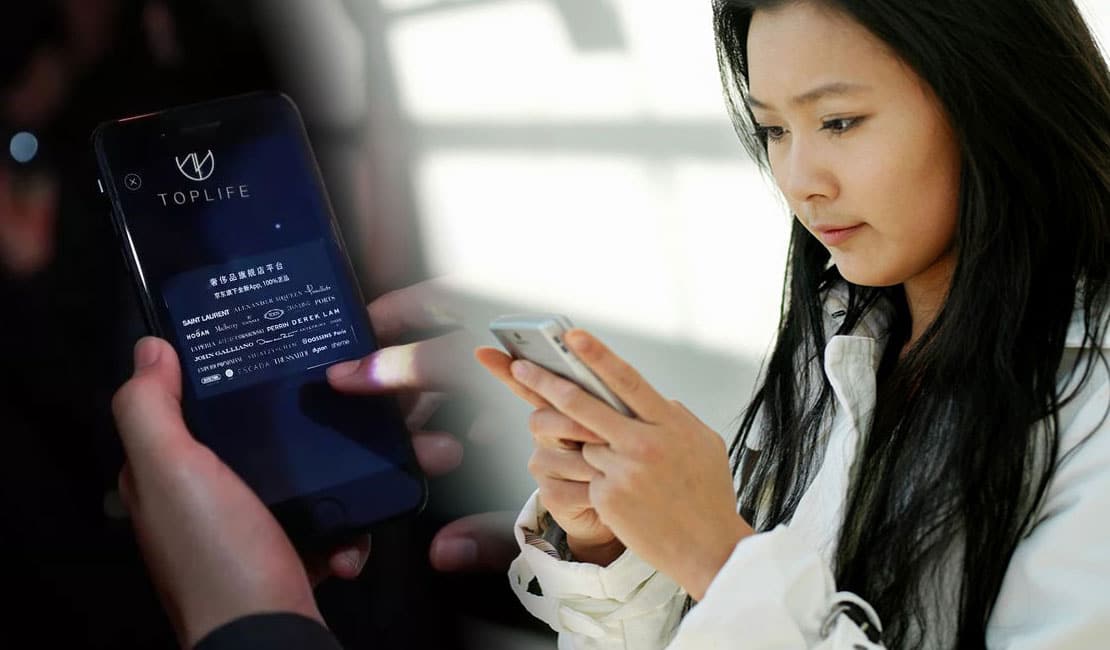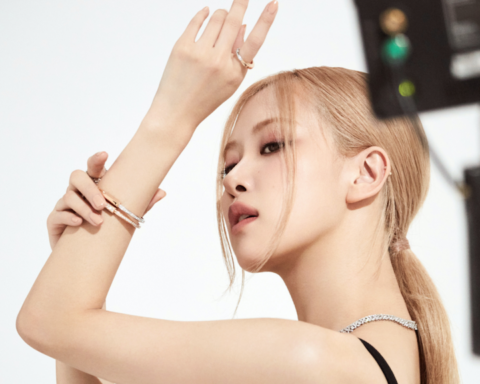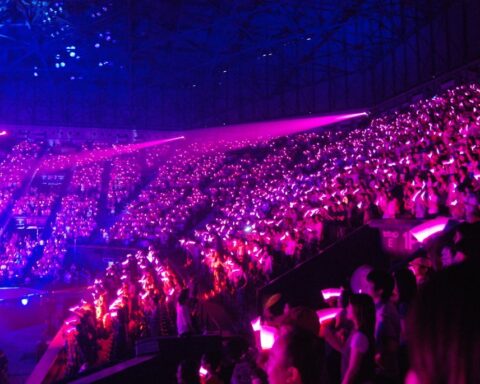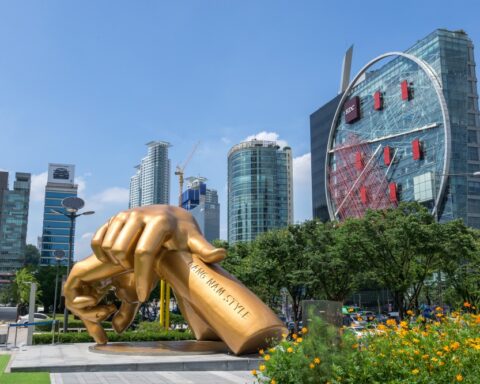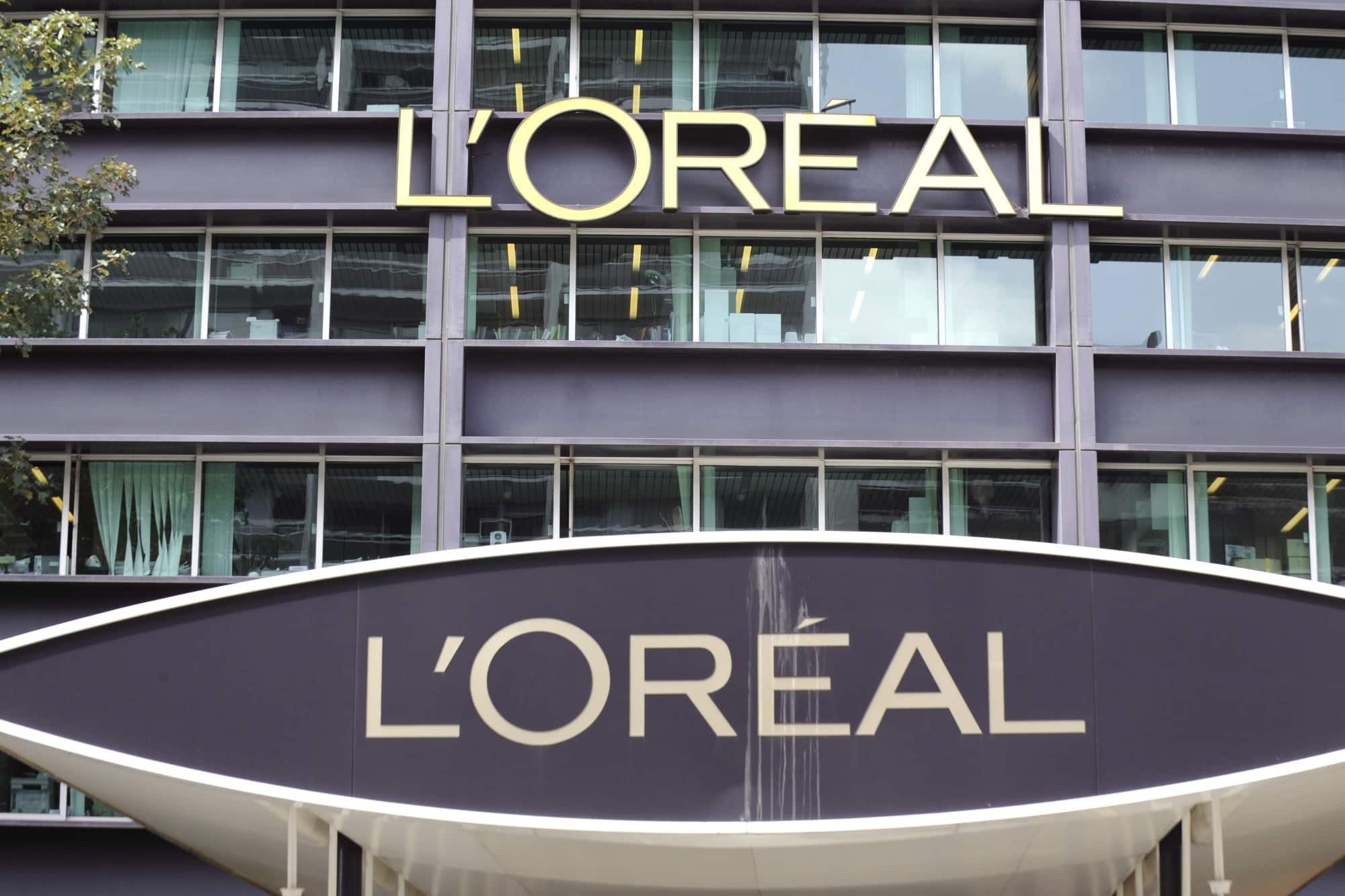[vc_row njt-role=”people-in-the-roles” njt-role-user-roles=”administrator,editor,author,armember”][vc_column][vc_column_text]
In the first part of the survey, the context was set for luxury e-commerce in China. When did it start, where are online sales on Chinese soil now and what new solutions have been developed. Discover today the second part of this survey.
The latest innovation, the platform seeks to capitalize on the web3 economy through the inauguration of a virtual gallery, entirely dedicated to NFTs, these rare digital works that act as certificates of authenticity. About twenty brands such as Burberry or Versace have already proposed their own collections of NFT.
With the support of its parent company Alibaba’s in-house innovation lab Damo Academy, the platform also has a 3D visualization feature that facilitates online shopping for the majority of its products. Customers of the Tmall Luxury Pavilion can access virtual fitting rooms to judge the fit of a garment, watch or jewel, using technologies that combine virtual and augmented reality. For Valentine’s Day 2022, Burberry and Valentino used this 3D imagery to share an unboxing of products and present detailed views of them.
With livestreaming booming, Tmall Luxury Pavilion now offers three configurations that customers can test in the comfort of their living room. In addition to an all-public version, there is a One-to-Few offer that allows the brand to offer access to its live shopping session by invitation from the platform’s data, a model chosen by the watchmaker Vacheron Constantin. Alongside this, there is a more intimate one-to-one version originally developed for Cartier, which has ended up seducing many brands such as Burberry. Here, the customer can benefit from a personalized video interview with a sales consultant.
As Yuan Zou, Head of Europe & Luxury Fashion at the Chinese digital agency Hylink, says, “In a country where customers are still afraid of finding a counterfeit luxury product, trust is built in e-commerce around two pillars: official boutiques and distributors as well as payment security, which makes non-delivery almost impossible“. Two points that have failed the Chinese e-commerce platform Secoo and precipitated its fall.
“Secoo shows the limits of the luxury e-commerce model as far as Touch & Feel and preserving the customer experience are concerned” as Yuan Zou states. She adds “It is not so much its model oriented around the second hand that weighed in its financial difficulties but a weakening of its physical stores following the COVID as well as an unfortunate diversification coupled with an ineffective fight against counterfeits“.
To recreate the gap with local players, Western e-commerce platforms are focusing on the omnichannel experience of e-commerce, mixing digital innovations and personalized offline experiences.
This is the case of Farfetch China, a luxury marketplace established in the country since 2014 with a strong tech DNA, which has been reconverted to the editorial business, to the point of taking the opposite path of Net-a-porter. To manage its customer relationship, Farfetch has created a membership program called ACCESS that categorizes experiences, services and benefits according to several levels: Bronze, Silver, Gold, Platinium or even Private Client & VIP.
The platform differentiates itself from its competitors with the use of stylists available to its private clients. These stylists, true fashion experts, unearth the rarest pieces and present a preview of the latest novelties.
The platform also goes further by personalizing the segmentation of its offer to its best customers.
Farfetch also offers access to inaccessible places such as fashion shows, unusual dinners or even fully privatized exhibition spaces.
“A private client or VIP who opens the Farfetch application does not have access to the same products, nor to the same experiences,” said Alexis Bonhomme, Vice President Greater China & Asia-Pacific at Farfetch, during the last CEW (Cosmetic Executive Women) France meeting.
An ultra-exclusive customer segment, able to spend more than $15,000 per year, represents 30% of Farfetch’s turnover in China and Asia (compared to 25% internationally).
These stylists, true fashion experts, unearth the rarest pieces and preview the latest novelties.
Farfetch also offers access to inaccessible places such as fashion shows, unusual dinners or even entirely private exhibition spaces.
Growth opportunities in Chinese luxury e-commerce still possible
The normalization of the e-commerce sector calls for brands and platforms to diversify their investments, notably by balancing online and offline touch points.
Until now, e-commerce has often been seen as a low-cost strategy to promote one’s brand and sell products.
However, the sophistication of the online luxury goods sales market is making the competition on traditional marketplaces tougher, with customer acquisition costs increasing and results less marked than before.
In 2021, customer acquisition was $70 (RMB 477) on Alibaba versus $56 (RMB 384) on JD.com. “Coming out of containment, I’ve never had so many requests to go to Tmall and JD.com,” says Anais Bournonville. She adds, “However, e-commerce in China has become so competitive, that today the cost of customer acquisition is far too high and the reach too uncertain. Luxury brands prefer to turn to more content-oriented social commerce apps like Douyin and Xiaohongshu.”
Long considered not very credible for the luxury world, the micro-video platform Douyin (China’s version of TikTok) and its 600M users is currently growing exponentially and is unmatched in both engaging and creating interaction. The opening of its e-commerce section through Douyin Mall in 2021 is not for nothing.
Thus, Dior Parfum was the first luxury brand to use this feature in September 2022, knowing that the House of Dior had also pioneered the use of the social platform in 2018. The LVMH Group’s Maison cites the fact that traditional e-commerce is no longer the growth driver for luxury brands as the reason. Burberry has also capitalized on the app by allowing head-to-toe customization of its ZaiZai virtual avatar in the British brand’s colors.
These micro-video options are also coming to Wechat. For example, Chanel – though known for its singular reluctance to use e-commerce – has used the new Wechat Channels feature, a way to share visual content and links to its products four times a month.
Another application that could – with the recession impacting the aspirational luxury customer base – eventually interest luxury brands is Pinduoduo. This group buying platform, which is very popular with people in tier 3 and 4 cities and is integrated with Tencent’s super app Wechat, now has a 13% market share in Chinese e-commerce. Most importantly, with its 880 million annual users, it has just surpassed Alibaba and JD.com in terms of user numbers.
To be continued…
Read also >Survey: China’s luxury e-commerce on the road to maturity (part 1)
Featured photo : ©Press[/vc_column_text][/vc_column][/vc_row][vc_row njt-role=”not-logged-in”][vc_column][vc_column_text]
In the first part of the survey, the context was set for luxury e-commerce in China. When did it start, where are online sales on Chinese soil now and what new solutions have been developed. Discover today the second part of this survey.
The latest innovation, the platform seeks to capitalize on the web3 economy through the inauguration of a virtual gallery, entirely dedicated to NFTs, these rare digital works that act as certificates of authenticity. About twenty brands such as Burberry or Versace have already proposed their own collections of NFT.
With the support of its parent company Alibaba’s in-house innovation lab Damo Academy, the platform also has a 3D visualization feature that facilitates online shopping for the majority of its products. Customers of the Tmall Luxury Pavilion can access virtual fitting rooms to judge the fit of a garment, watch or jewel, using technologies that combine virtual and augmented reality. For Valentine’s Day 2022, Burberry and Valentino used this 3D imagery to share an unboxing of products and present detailed views of them.
With livestreaming booming, Tmall Luxury Pavilion now offers three configurations that customers can test in the comfort of their living room. In addition to an all-public version, there is a One-to-Few offer that allows the brand to offer access to its live shopping session by invitation from the platform’s data, a model chosen by the watchmaker Vacheron Constantin. Alongside this, there is a more intimate one-to-one version originally developed for Cartier, which has ended up seducing many brands such as Burberry. Here, the customer can benefit from a personalized video interview with a sales consultant.
As Yuan Zou, Head of Europe & Luxury Fashion at the Chinese digital agency Hylink, says, “In a country where customers are still afraid of finding a counterfeit luxury product, trust is built in e-commerce around two pillars: official boutiques and distributors as well as payment security, which makes non-delivery almost impossible“. Two points that have failed the Chinese e-commerce platform Secoo and precipitated its fall.
“Secoo shows the limits of the luxury e-commerce model as far as Touch & Feel and preserving the customer experience are concerned” as Yuan Zou states. She adds “It is not so much its model oriented around the second hand that weighed in its financial difficulties but a weakening of its physical stores following the COVID as well as an unfortunate diversification coupled with an ineffective fight against counterfeits“.
To recreate the gap with local players, Western e-commerce platforms are focusing on the omnichannel experience of e-commerce, mixing digital innovations and personalized offline experiences.
This is the case of Farfetch China, a luxury marketplace established in the country since 2014 with a strong tech DNA, which has been reconverted to the editorial business, to the point of taking the opposite path of Net-a-porter. To manage its customer relationship, Farfetch has created a membership program called ACCESS that categorizes experiences, services and benefits according to several levels: Bronze, Silver, Gold, Platinium or even Private Client & VIP.
The platform differentiates itself from its competitors with the use of stylists available to its private clients. These stylists, true fashion experts, unearth the rarest pieces and present a preview of the latest novelties.
The platform also goes further by personalizing the segmentation of its offer to its best customers.
Farfetch also offers access to inaccessible places such as fashion shows, unusual dinners or even fully privatized exhibition spaces.
“A private client or VIP who opens the Farfetch application does not have access to the same products, nor to the same experiences,” said Alexis Bonhomme, Vice President Greater China & Asia-Pacific at Farfetch, during the last CEW (Cosmetic Executive Women) France meeting.
An ultra-exclusive customer segment, able to spend more than $15,000 per year, represents 30% of Farfetch’s turnover in China and Asia (compared to 25% internationally).
These stylists, true fashion experts, unearth the rarest pieces and preview the latest novelties.
Farfetch also offers access to inaccessible places such as fashion shows, unusual dinners or even entirely private exhibition spaces.
[…][/vc_column_text][vc_cta h2=”This article is reserved for subscribers.” h2_font_container=”tag:h2|font_size:16|text_align:left” h2_use_theme_fonts=”yes” h4=”Subscribe now !” h4_font_container=”tag:h2|font_size:32|text_align:left|line_height:bas” h4_use_theme_fonts=”yes” txt_align=”center” color=”black” add_button=”right” btn_title=”I SUBSCRIBE !” btn_color=”danger” btn_size=”lg” btn_align=”center” use_custom_fonts_h2=”true” use_custom_fonts_h4=”true” btn_button_block=”true” btn_custom_onclick=”true” btn_link=”url:https%3A%2F%2Ftest2023.luxus-plus.com%2Fen%2Fsubscriptions-and-newsletter-special-offer-valid-until-september-30-2020-2-2%2F”]Get unlimited access to all articles and live a new reading experience, preview contents, exclusive newsletters…
Already have an account ? Please log in.[/vc_cta][vc_column_text]Featured photo : ©Press [/vc_column_text][/vc_column][/vc_row][vc_row njt-role=”people-in-the-roles” njt-role-user-roles=”subscriber,customer”][vc_column][vc_column_text]
In the first part of the survey, the context was set for luxury e-commerce in China. When did it start, where are online sales on Chinese soil now and what new solutions have been developed. Discover today the second part of this survey.
The latest innovation, the platform seeks to capitalize on the web3 economy through the inauguration of a virtual gallery, entirely dedicated to NFTs, these rare digital works that act as certificates of authenticity. About twenty brands such as Burberry or Versace have already proposed their own collections of NFT.
With the support of its parent company Alibaba’s in-house innovation lab Damo Academy, the platform also has a 3D visualization feature that facilitates online shopping for the majority of its products. Customers of the Tmall Luxury Pavilion can access virtual fitting rooms to judge the fit of a garment, watch or jewel, using technologies that combine virtual and augmented reality. For Valentine’s Day 2022, Burberry and Valentino used this 3D imagery to share an unboxing of products and present detailed views of them.
With livestreaming booming, Tmall Luxury Pavilion now offers three configurations that customers can test in the comfort of their living room. In addition to an all-public version, there is a One-to-Few offer that allows the brand to offer access to its live shopping session by invitation from the platform’s data, a model chosen by the watchmaker Vacheron Constantin. Alongside this, there is a more intimate one-to-one version originally developed for Cartier, which has ended up seducing many brands such as Burberry. Here, the customer can benefit from a personalized video interview with a sales consultant.
As Yuan Zou, Head of Europe & Luxury Fashion at the Chinese digital agency Hylink, says, “In a country where customers are still afraid of finding a counterfeit luxury product, trust is built in e-commerce around two pillars: official boutiques and distributors as well as payment security, which makes non-delivery almost impossible“. Two points that have failed the Chinese e-commerce platform Secoo and precipitated its fall.
“Secoo shows the limits of the luxury e-commerce model as far as Touch & Feel and preserving the customer experience are concerned” as Yuan Zou states. She adds “It is not so much its model oriented around the second hand that weighed in its financial difficulties but a weakening of its physical stores following the COVID as well as an unfortunate diversification coupled with an ineffective fight against counterfeits“.
To recreate the gap with local players, Western e-commerce platforms are focusing on the omnichannel experience of e-commerce, mixing digital innovations and personalized offline experiences.
This is the case of Farfetch China, a luxury marketplace established in the country since 2014 with a strong tech DNA, which has been reconverted to the editorial business, to the point of taking the opposite path of Net-a-porter. To manage its customer relationship, Farfetch has created a membership program called ACCESS that categorizes experiences, services and benefits according to several levels: Bronze, Silver, Gold, Platinium or even Private Client & VIP.
The platform differentiates itself from its competitors with the use of stylists available to its private clients. These stylists, true fashion experts, unearth the rarest pieces and present a preview of the latest novelties.
The platform also goes further by personalizing the segmentation of its offer to its best customers.
Farfetch also offers access to inaccessible places such as fashion shows, unusual dinners or even fully privatized exhibition spaces.
“A private client or VIP who opens the Farfetch application does not have access to the same products, nor to the same experiences,” said Alexis Bonhomme, Vice President Greater China & Asia-Pacific at Farfetch, during the last CEW (Cosmetic Executive Women) France meeting.
An ultra-exclusive customer segment, able to spend more than $15,000 per year, represents 30% of Farfetch’s turnover in China and Asia (compared to 25% internationally).
These stylists, true fashion experts, unearth the rarest pieces and preview the latest novelties.
Farfetch also offers access to inaccessible places such as fashion shows, unusual dinners or even entirely private exhibition spaces.
[…][/vc_column_text][vc_cta h2=”This article is reserved for subscribers.” h2_font_container=”tag:h2|font_size:16|text_align:left” h2_use_theme_fonts=”yes” h4=”Subscribe now !” h4_font_container=”tag:h2|font_size:32|text_align:left|line_height:bas” h4_use_theme_fonts=”yes” txt_align=”center” color=”black” add_button=”right” btn_title=”I SUBSCRIBE !” btn_color=”danger” btn_size=”lg” btn_align=”center” use_custom_fonts_h2=”true” use_custom_fonts_h4=”true” btn_button_block=”true” btn_custom_onclick=”true” btn_link=”url:https%3A%2F%2Ftest2023.luxus-plus.com%2Fen%2Fsubscriptions-and-newsletter-special-offer-valid-until-september-30-2020-2-2%2F”]Get unlimited access to all articles and live a new reading experience, preview contents, exclusive newsletters…
Already have an account ? Please log in.[/vc_cta][vc_column_text]Featured photo : ©Press[/vc_column_text][/vc_column][/vc_row][vc_row njt-role=”people-in-the-roles” njt-role-user-roles=”subscriber,customer”][vc_column][vc_column_text]


